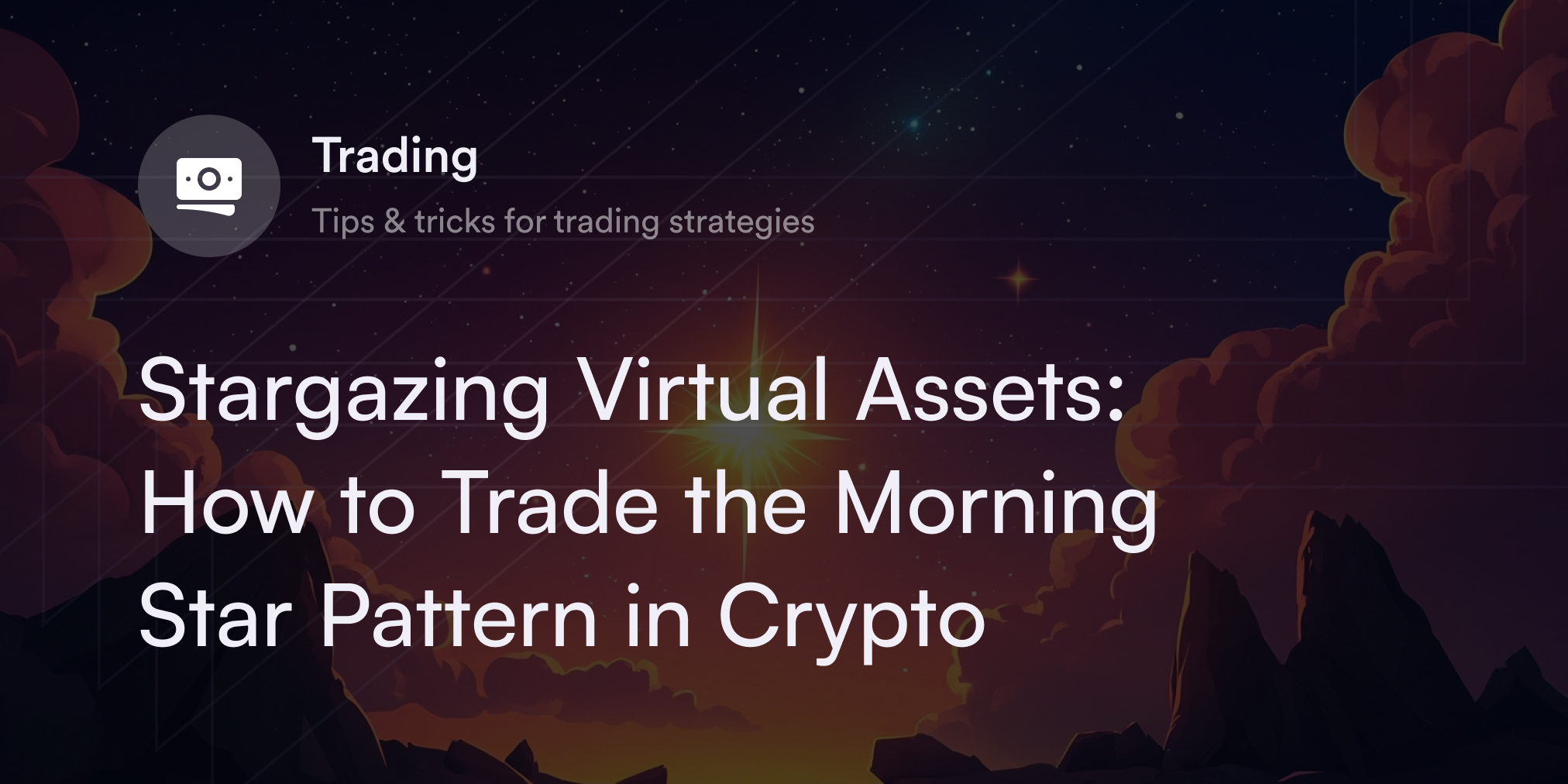


Between 2021 and 2022, more than $2 trillion left the global cryptocurrency market, marking one of the most dramatic falls in the industry’s history. The excitement around all things related to tokenization and blockchain technology soured suddenly as traders pulled out of their digital assets and clung to cash. Although steep drops like the 2022 downturn are anxiety-inducing for even the most seasoned traders, they're a common occurrence. These so-called "bear markets" are a part of the nature of the ecosystem.
Market downturns are never pleasant for long-term traders, but there are strategies traders use to help manage their holdings and try to mitigate losses during these challenging times. Traders should be aware that many, if not most, suffer substantial losses in bear markets. Learn what to do in a bear market to help avoid falling prey to the "bearish blues."
What is a Crypto Bear Market?
A bear market occurs when an asset's value falls consistently over months to years, though cryptocurrency assets often suffer far more drastic and rapid dives. Unlike “bull markets,” it's named after a bear's standard act of aggression: swiping downward with its claws.
Traditionally, economists define a stock bear market as major price indexes—such as the S&P 500 Index, Nasdaq 100, or Dow Jones Industrial Average—falling by 20%. Although the "20% rule" also applies to the cryptocurrency context, these assets may fall faster and further when entering bear market territory. In the digital assets community, traders use the phrase "crypto winter" to describe an extended period of sideways price action after a steep bear market selloff.
As one of the newest asset categories, cryptocurrencies typically have high average price volatility. For example, Bitcoin (BTC) fell from a peak of $69,000 USD in November of 2021 to a bear market low of $16,400 a year later. Non-Bitcoin cryptocurrencies (called “altcoins”)—including Ethereum (ETH), Solana (SOL), and Litecoin (LTC)—posted even higher percentage drops during the 2022 cryptocurrency bear market.
The sustained selling pressure during bearish periods often makes traders feel pessimistic about the future of their assets. If traders remain in the cryptocurrency space, they typically put most of their funds into Bitcoin or USD stablecoins like USDC or USDT to take some risk off the table. Traders are also less likely to bet on smaller altcoin projects or new Web3 protocols as money leaves the cryptocurrency ecosystem.
What Causes a Bear Market?
It may seem like bear markets happen out of the blue, but there are usually macroeconomic catalysts behind a sustained price plunge. For instance, weak economic data—such as low gross-domestic-product (GDP) numbers, high unemployment, and increasing inflation rates—tend to discourage traders from putting their money in the cryptocurrency market. Government regulation, enforcement actions and issues with banks that focus on cryptocurrency are crypto-specific factors that can also cause a “bear market.”
When people feel less certain about the economy's health or their yearly income, they're more prone to hold on to cash or focus on asset allocation in more conservative investments like precious metals. Government policies, such as interest rate hikes from the Federal Reserve (Fed), unforeseen pandemics, and macroeconomic tensions, may also contribute to the uncertainty that often pervades bear markets. For example, Bitcoin's price fell from nearly $10,000 to $4,000 USD in two days following the onset of the COVID-19 pandemic in 2020. Similarly, BTC fell from roughly $60,000 to a low of $31,000 USD in 2021 after China announced a ban on crypto trading and Bitcoin mining operations.
High-profile scandals, failed Web3 projects, and hacks also typically precede significant price dips in the cryptocurrency sector. For instance, multiple centralized crypto companies, including Celsius Network, Voyager Digital, and FTX, halted customer withdrawals and filed for bankruptcy in 2022, triggering steep price declines across digital assets.
How Long Do Bear Markets Last?
Crypto bear markets have lasted for as little as two months to as long as a few years before recovering and moving upwards.
Since multiple factors affect financial markets, it’s challenging to accurately predict the length of a bear market before it’s ended. However, some analysts posit the cryptocurrency market moves in four-year cycles following an event known as the "Bitcoin halving." Naturally, this theory is based on past performance which may not be indicative of future market behavior.
After nodes on the Bitcoin blockchain post 210,000 blocks of transaction data—which happens approximately every four years—the protocol automatically cuts BTC's issuance schedule in half, causing a significant supply shock to the ecosystem. Although past performance doesn’t guarantee future results, cryptocurrency prices followed similar patterns after the 2012, 2016, and 2020 Bitcoin halvings. When these three halvings went live, cryptocurrency prices went on a multi-month rise, followed by a crash and a multi-year bear market. In most prior bear markets, cryptocurrency prices fell to the all-time highs from their previous market cycle and remained there for roughly three years. Historical data suggests crypto bear markets tend to last a few years, but there's no way to predict the exact length of any market cycle.
How is a Bear Market Different from a Bull Market?
Unlike bear markets, crypto bull markets are periods when the prices of digital assets steadily rise in value. Instead of falling by 20%, the cryptocurrency market goes up by roughly 20% and continues moving higher for at least a few months during a bull run. Traders have a more favorable outlook on the future and are willing to put their money to work in cryptocurrencies—including riskier tokens with s small amount of money currently invested in the project—when conditions are bullish. A bull market is also more likely when macroeconomic conditions such as GDP numbers and unemployment are strong.
Strategies to Help Mitigate Losses in a Bear Market
It's scary to step into a sinking market, but bearish conditions can present opportunities to scale into cryptocurrency projects. If traders have faith in their holdings and can stomach sharp short-term price swings, several financial planning strategies exist for trading in a down market to see gains.
Here are four tips to help make bear market trades:
Stick with high-conviction cryptocurrency projects: Not all cryptocurrencies survive bear markets, so traders need to carefully consider which coins or tokens fit their diversified portfolio. Create a shortlist of potential cryptocurrencies to buy and conduct thorough research on the project's history, leadership, and goals for the future. After analyzing data and news about various cryptocurrencies, you can pinpoint which digital assets you feel might have a bright future and would be comfortable holding through short-term price dips.
Consider dollar-cost averaging (DCA): Traders who practice DCA purchase small positions in their favorite cryptocurrencies over a long period. For example, a DCA trader might buy $50 of Bitcoin every Friday or $75 of Ethereum whenever it drops by 10% in a 24-hour trading session. The point of DCA is to consistently buy small amounts of an asset to lower the average cost per coin or token. DCA is particularly beneficial in market downturns when digital assets trade for lower prices than during bull runs.
Look for technical chart patterns: Technical analysts examine a cryptocurrency's price history to find tradable patterns and favorable entry points. There are dozens of tools in technical market analysis, including trendlines, Bollinger bands, and Fibonacci retracements. Even if traders are more focused on a cryptocurrency's fundamentals than technical features, researching a few of these tools helps pinpoint key price levels to place more informed buy orders.
Set up price alerts or limit orders: Many crypto exchanges and price aggregator websites like CoinGecko and CoinMarketCap offer automatic price notifications to alert traders when a particular crypto hits a target price. These notifications are helpful when you want to enter a digital asset at a specific level but don't want to monitor the market constantly. In addition to price alerts, traders often set "limit orders" to buy a cryptocurrency at their preferred price. Once a cryptocurrency falls to a trader's "limit price," a buy order is automatically initiated. For example, if you use a limit order for one BTC at $20,000, your exchange buys a Bitcoin whenever BTC's price dips to $20,000 in a daily trading session.
Learn More About Cryptocurrency Trading with dYdX
Unsure what to do in a bear market? dYdX can help.
Although bear market corrections have happened repeatedly in the cryptocurrency industry’s history, they are unnerving experiences for traders of all skill levels. To assist new traders in understanding crypto market dynamics, dYdX has dozens of beginner-friendly articles explaining daily trading strategies, DCA, and the long-term investment strategy "HODL" on our Academy and product updates for the protocol on our Blog . dYdX also offers long and short crypto perpetual contracts for Bitcoin and altcoins on our decentralized exchange to eligible traders.
Disclaimer
The content of this article (the “Article”) is provided for general informational purposes only. Reference to any specific strategy, technique, product, service, or entity does not constitute an endorsement or recommendation by dYdX Trading Inc., or any affiliate, agent, or representative thereof (“dYdX”). Use of strategies, techniques, products or services referenced in this Article may involve material risks, including the risk of financial losses arising from the volatility, operational loss, or nonconsensual liquidation of digital assets. The content of this Article does not constitute, and should not be considered, construed, or relied upon as, financial advice, legal advice, tax advice, investment advice, or advice of any other nature; and the content of this Article is not an offer, solicitation or call to action to make any investment, or purchase any crypto asset, of any kind. dYdX makes no representation, assurance or guarantee as to the accuracy, completeness, timeliness, suitability, or validity of any information in this Article or any third-party website that may be linked to it. You are solely responsible for conducting independent research, performing due diligence, and/or seeking advice from a professional advisor prior to taking any financial, tax, legal, or investment action.
You may only use the dYdX Services in compliance with the dYdX Terms of Use available here, including the geographic restrictions therein.
Any applicable sponsorship in connection with this Article will be disclosed, and any reference to a sponsor in this Article is for disclosure purposes, or informational in nature, and in any event is not a call to action to make an investment, acquire a service or product, or purchase crypto assets. This Article does not offer the purchase or sale of any financial instruments or related services.
By accessing this Article and taking any action in connection with the information contained in this Article, you agree that dYdX is not responsible, directly or indirectly, for any errors, omissions, or delays related to this Article, or any damage, injury, or loss incurred in connection with use of or reliance on the content of this Article, including any specific strategy, technique, product, service, or entity that may be referenced in the Article.







